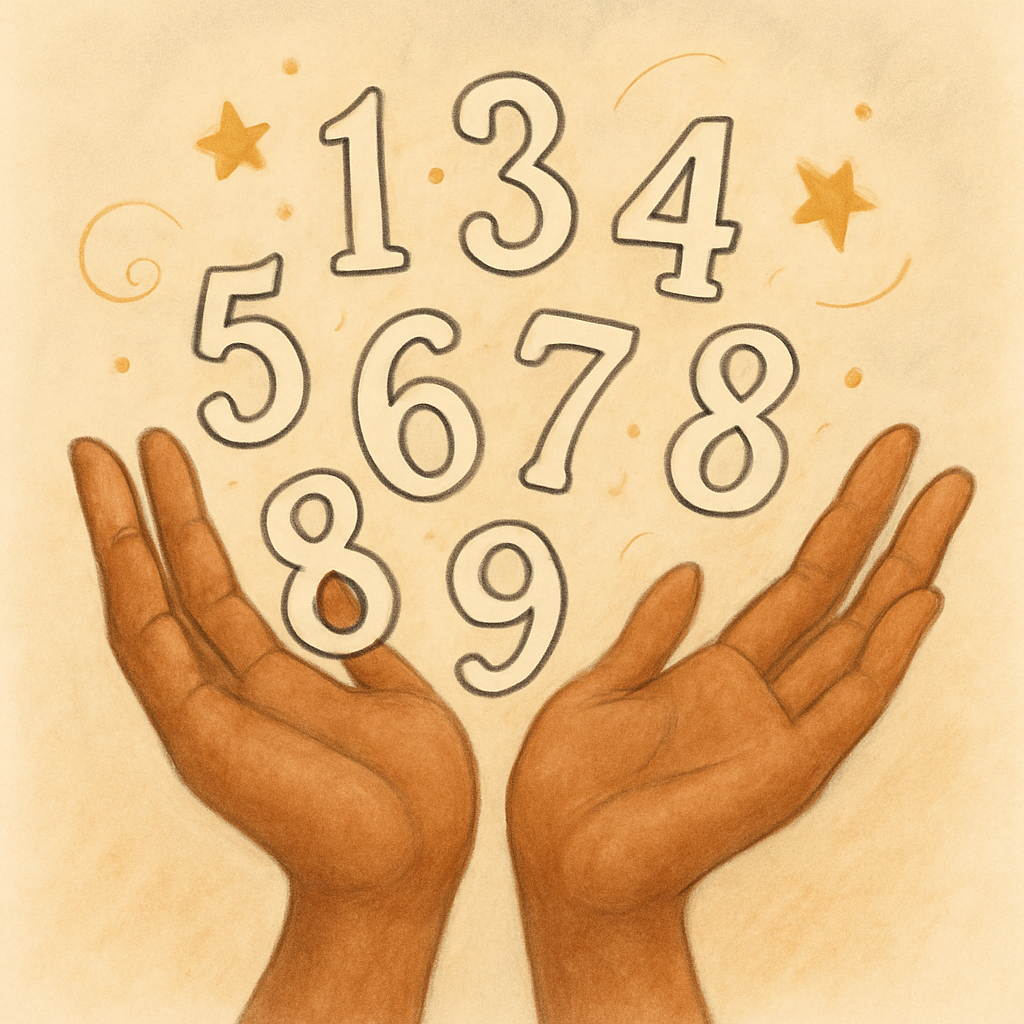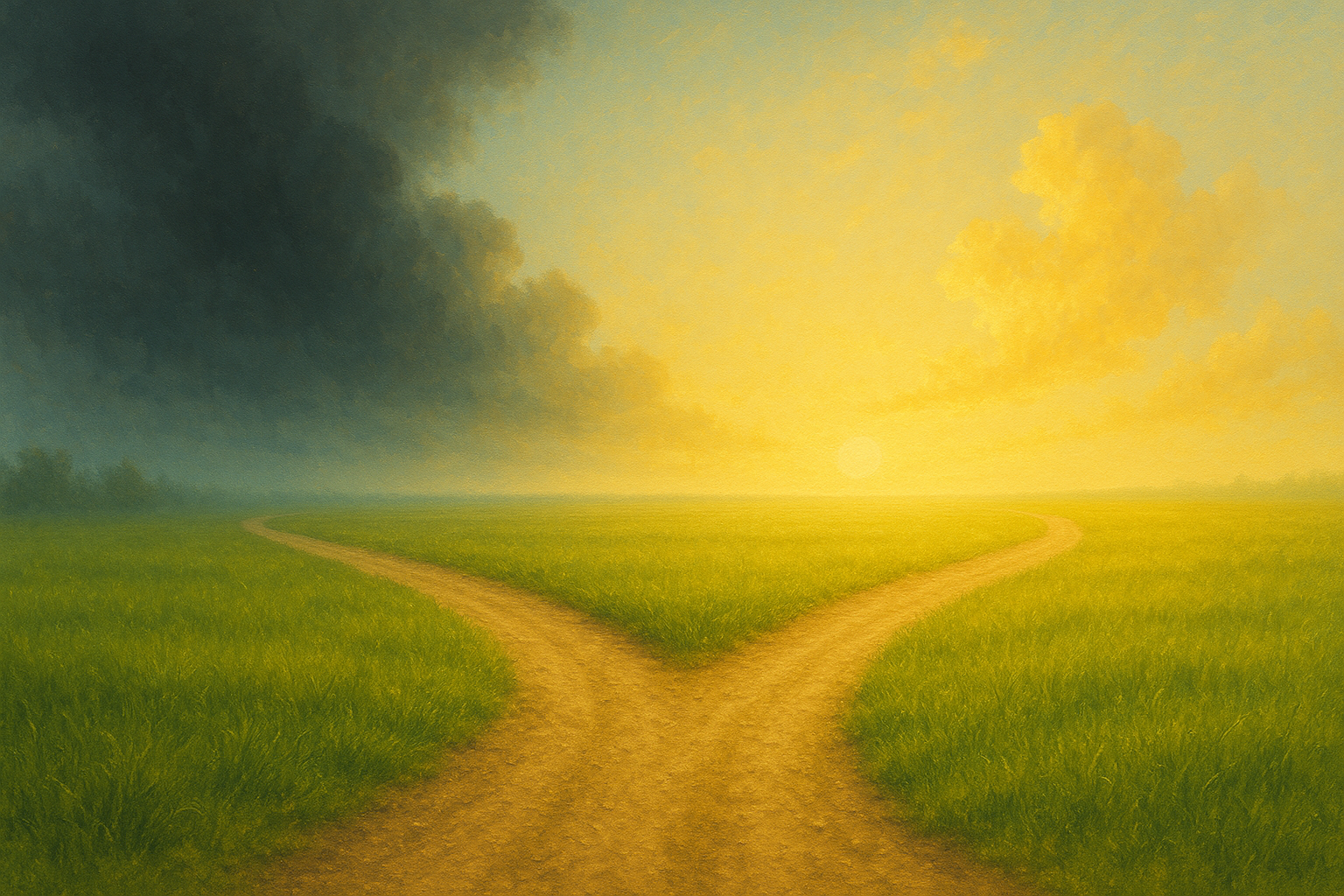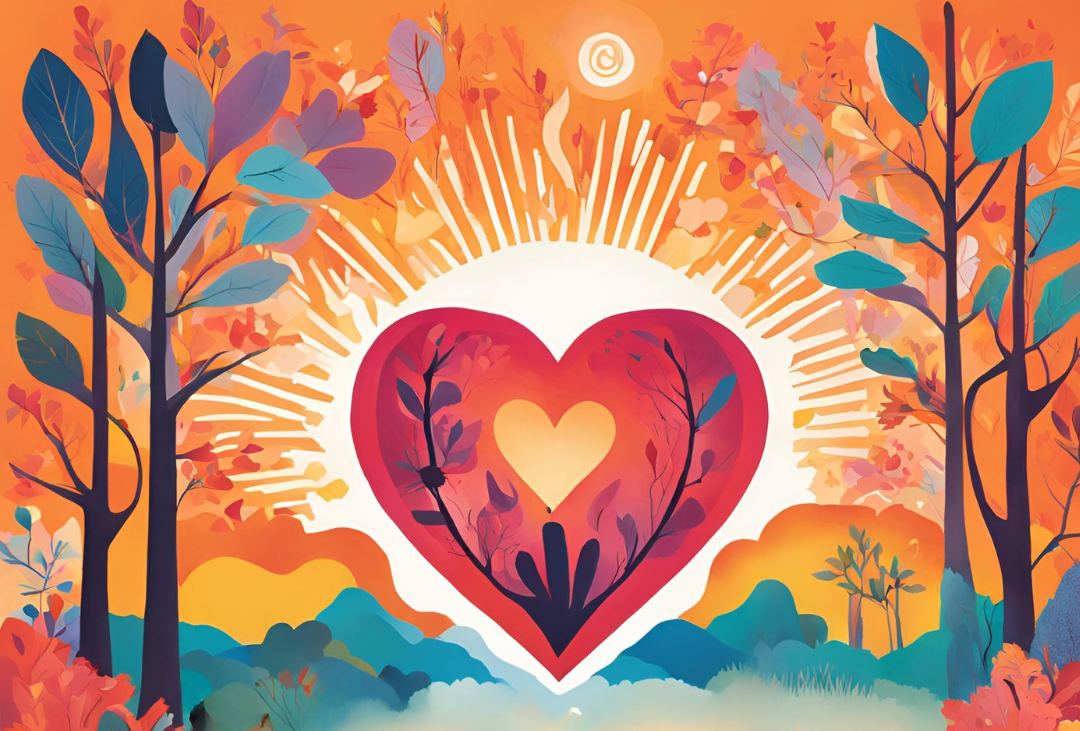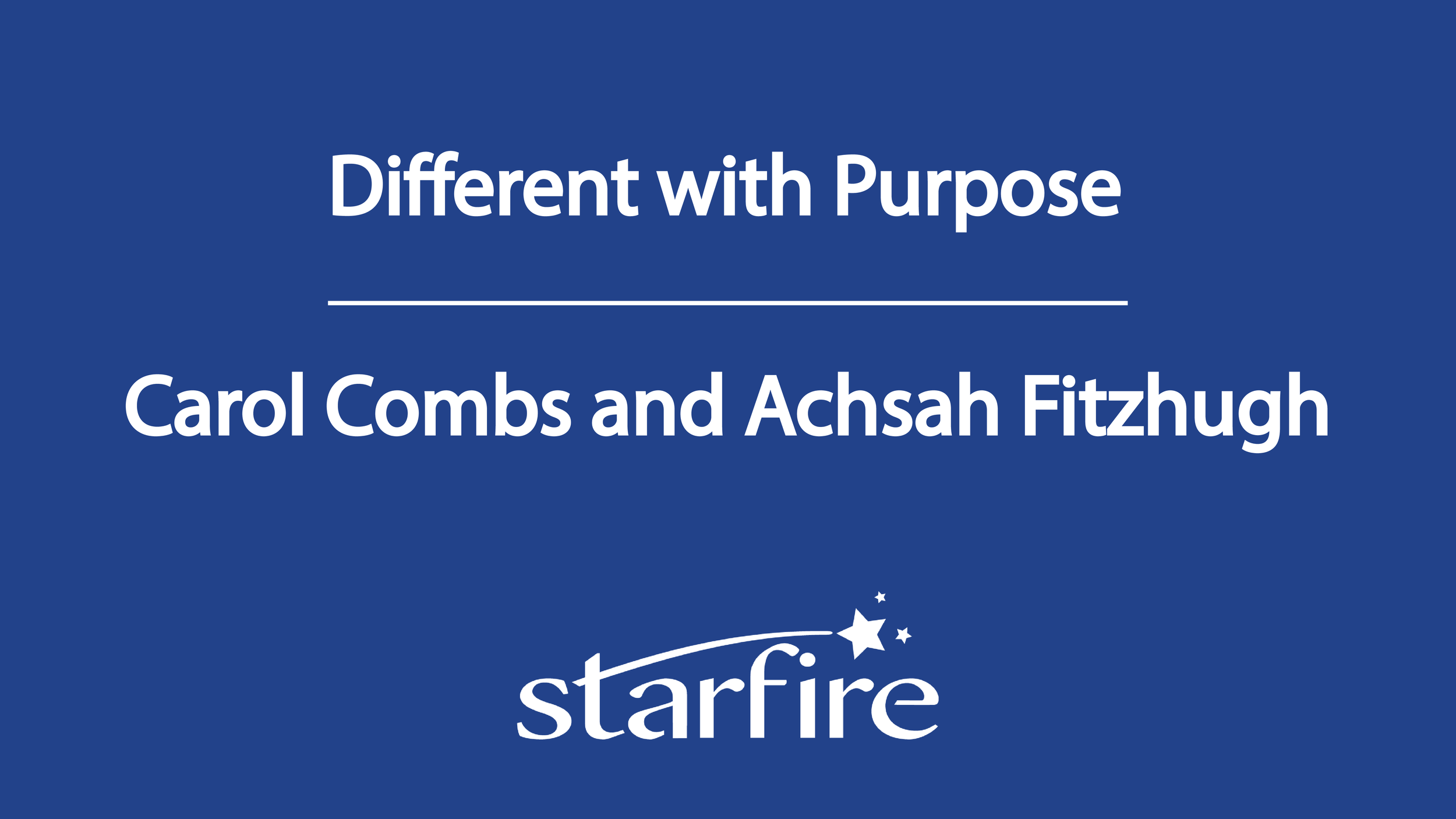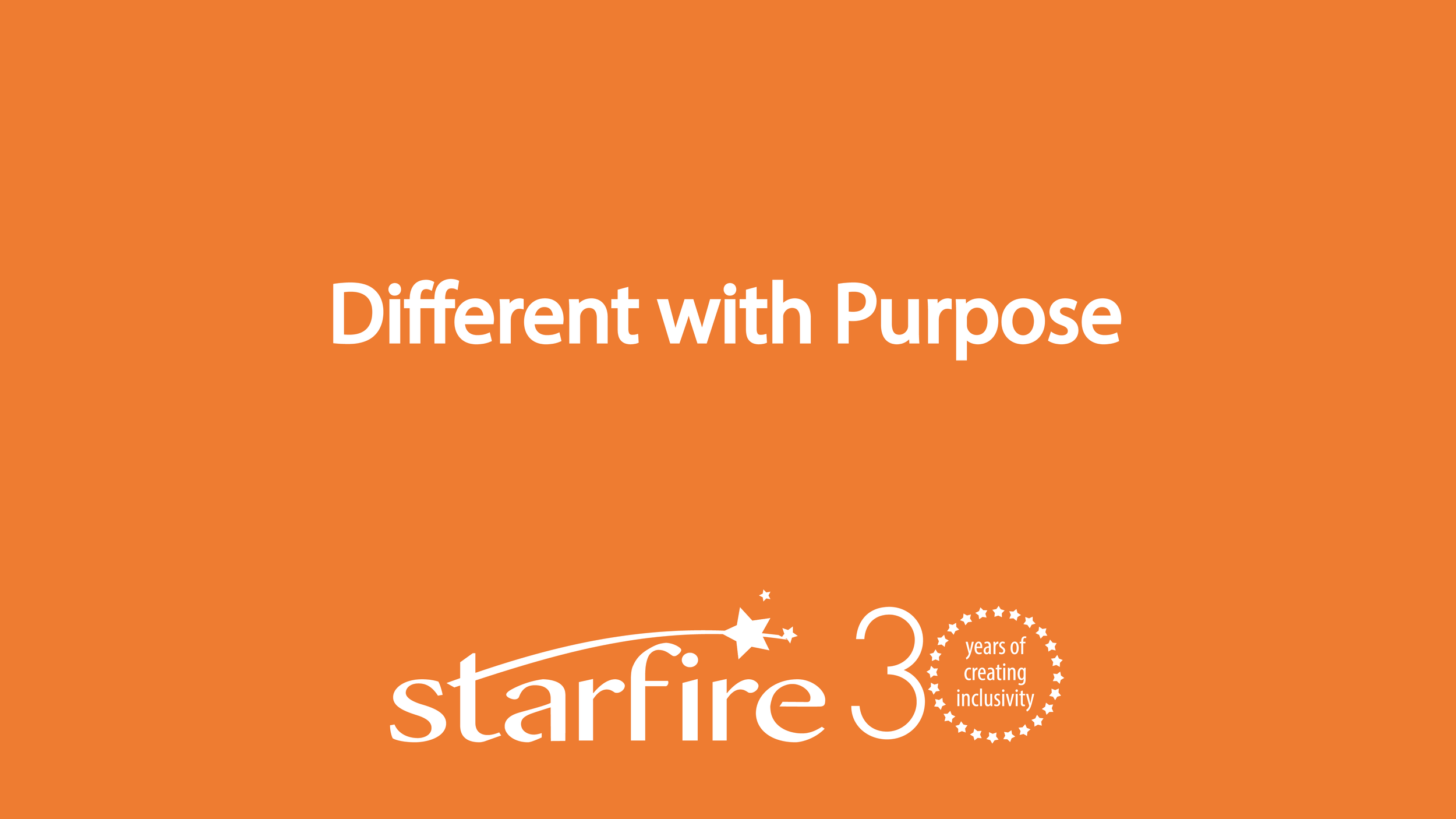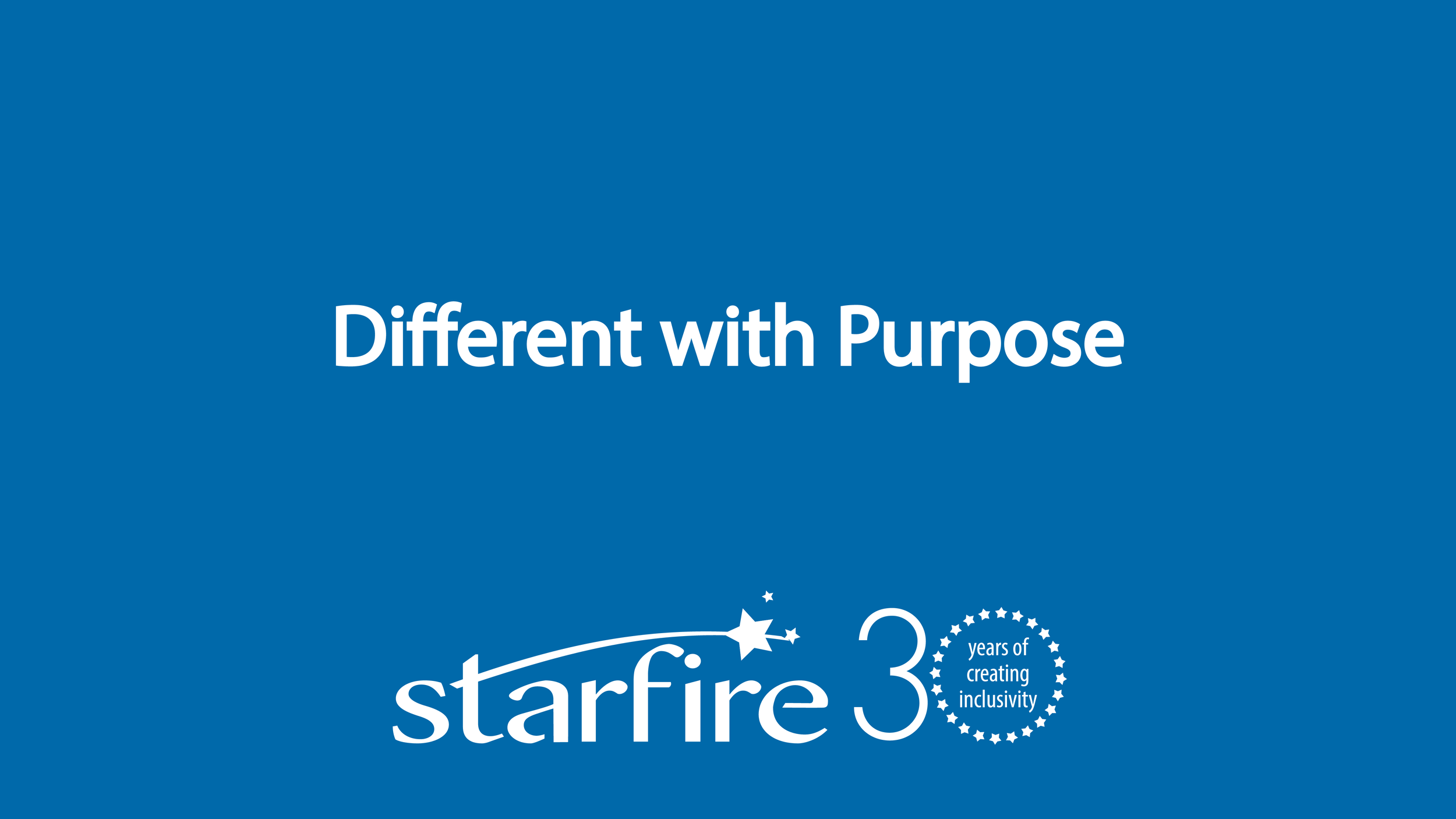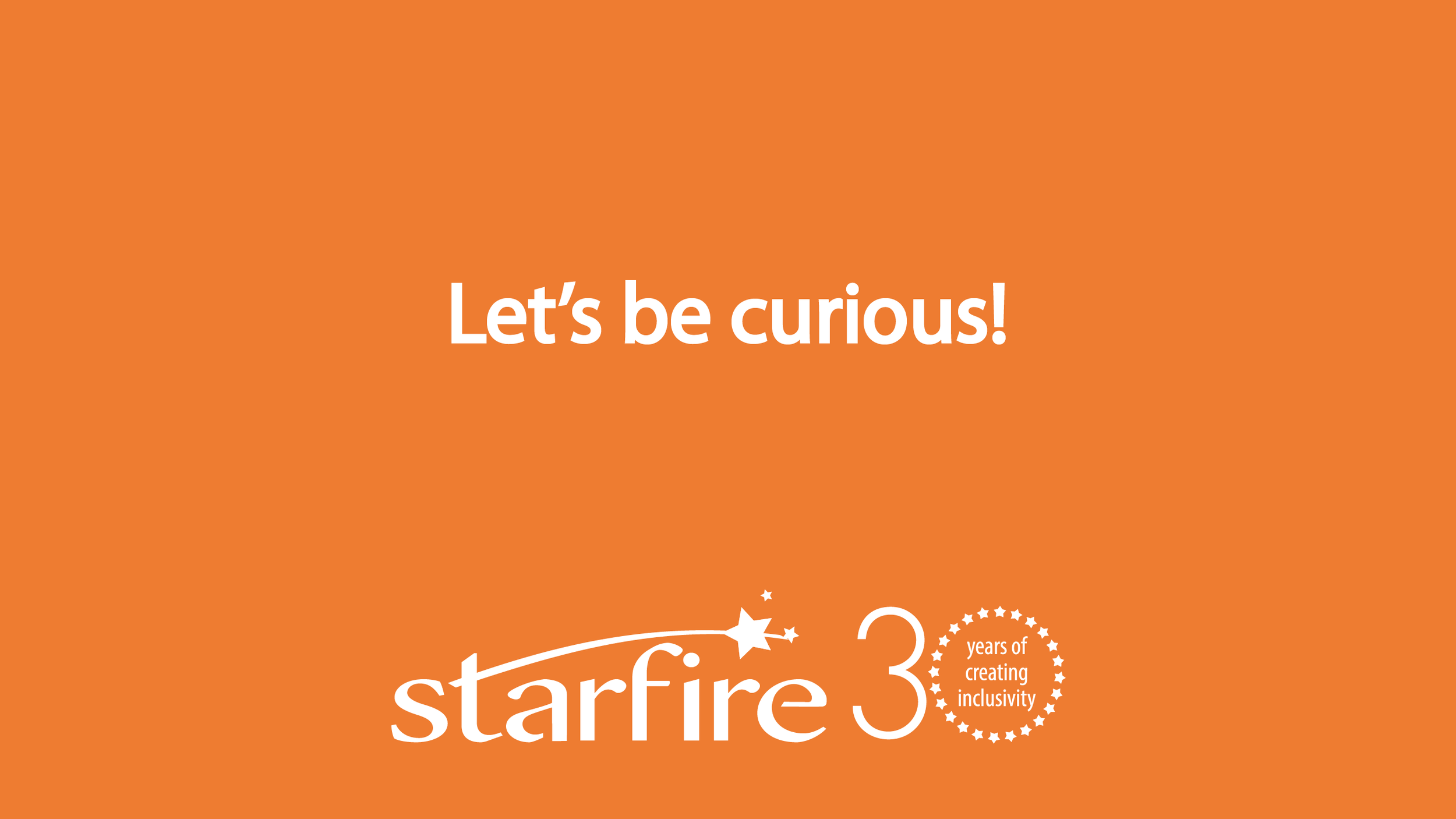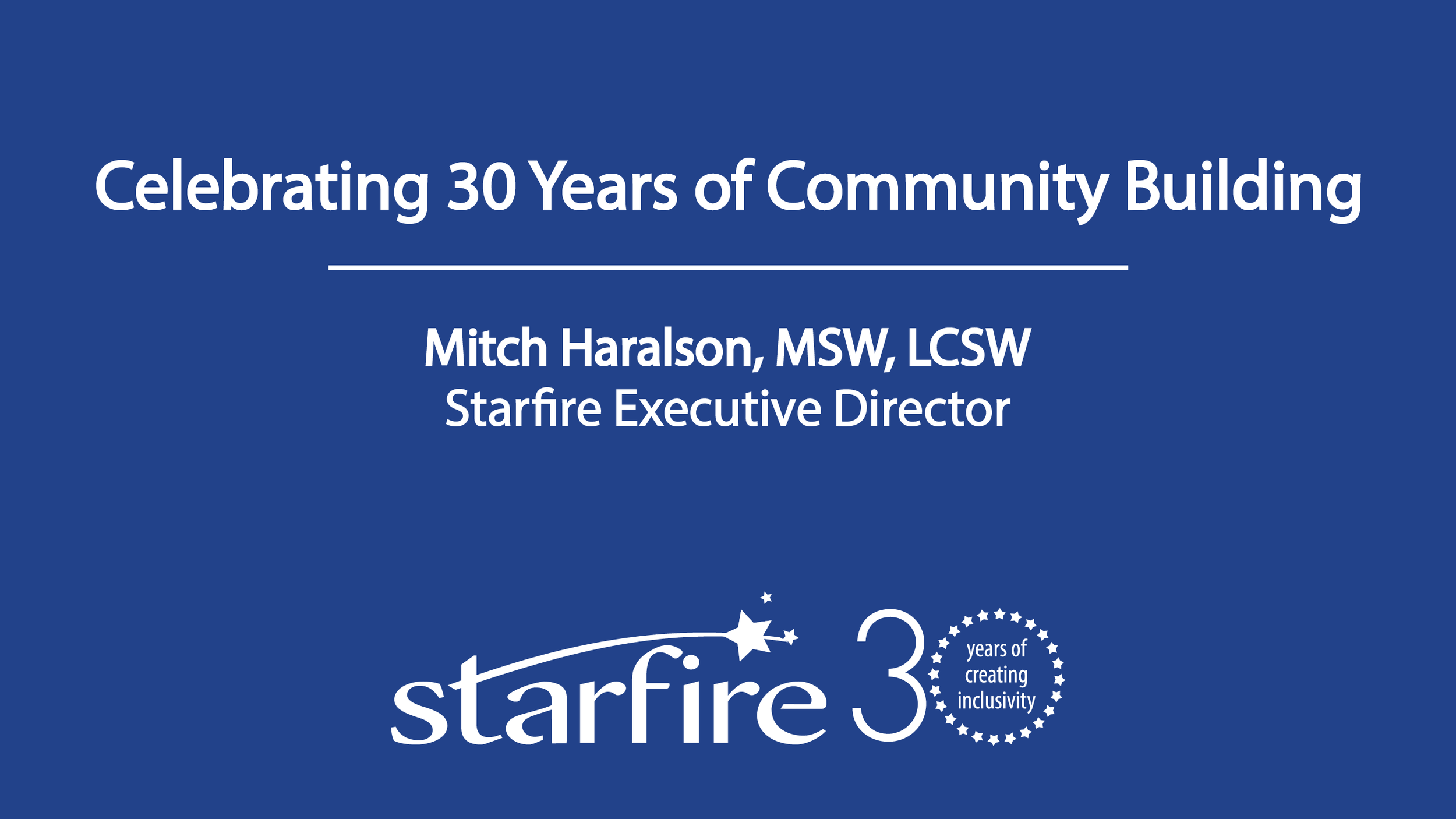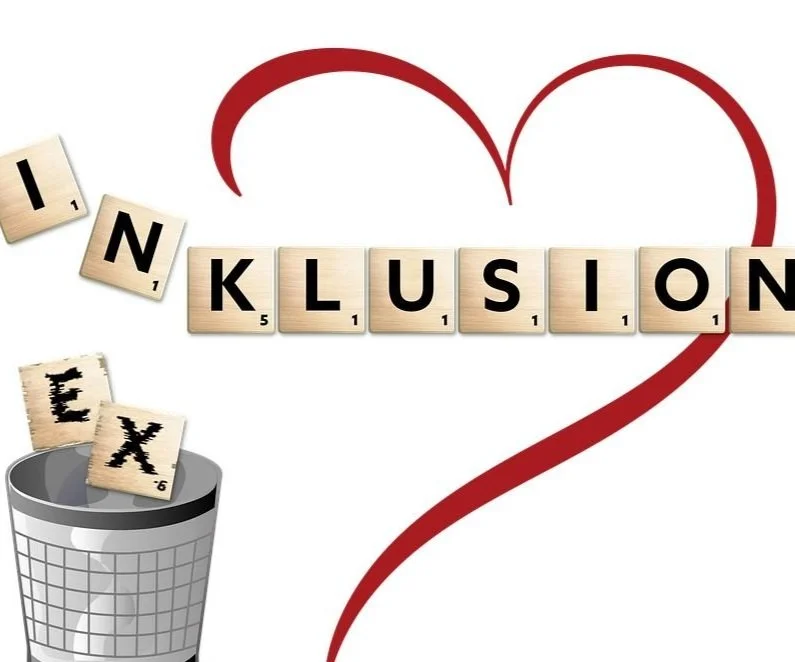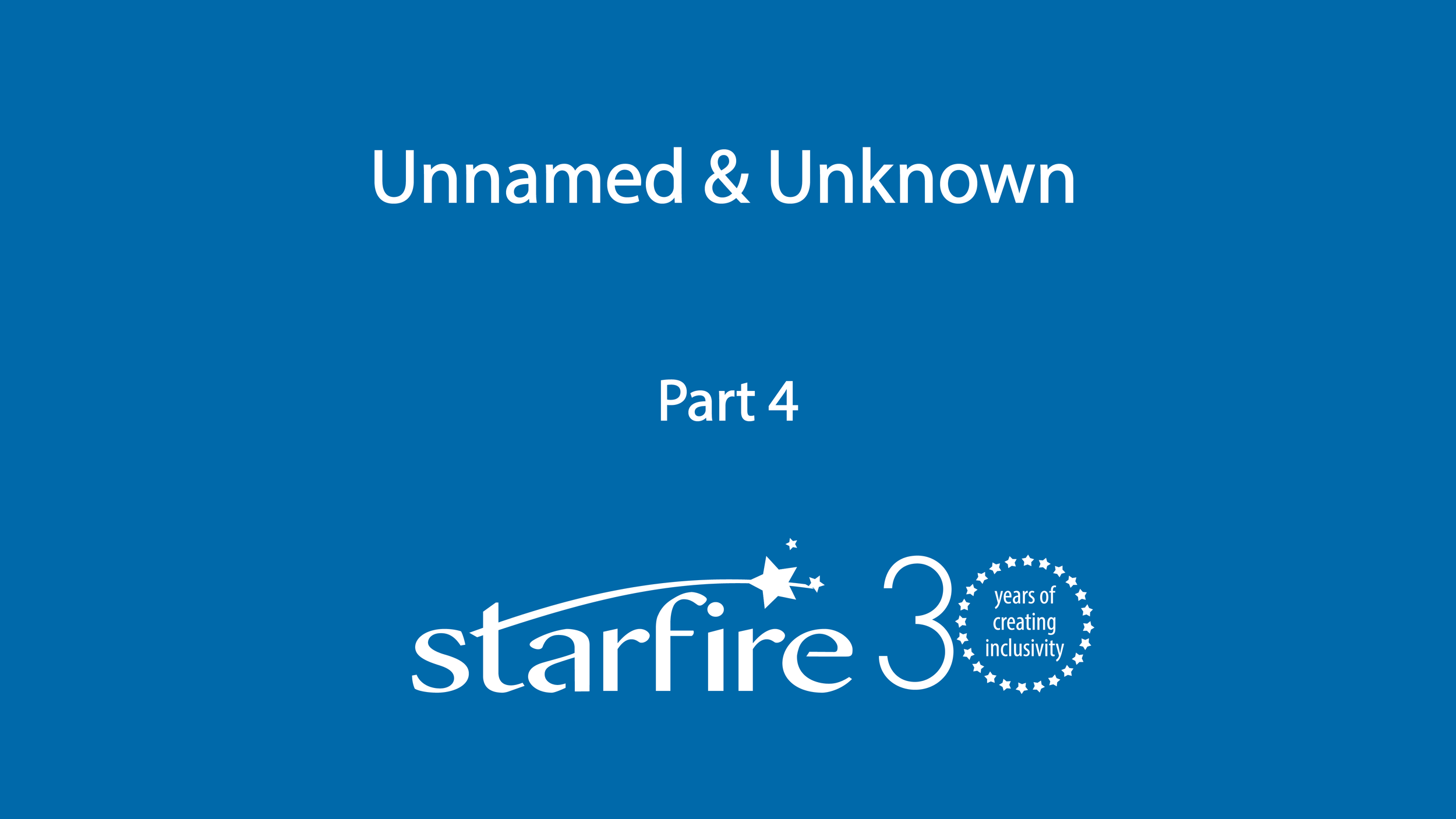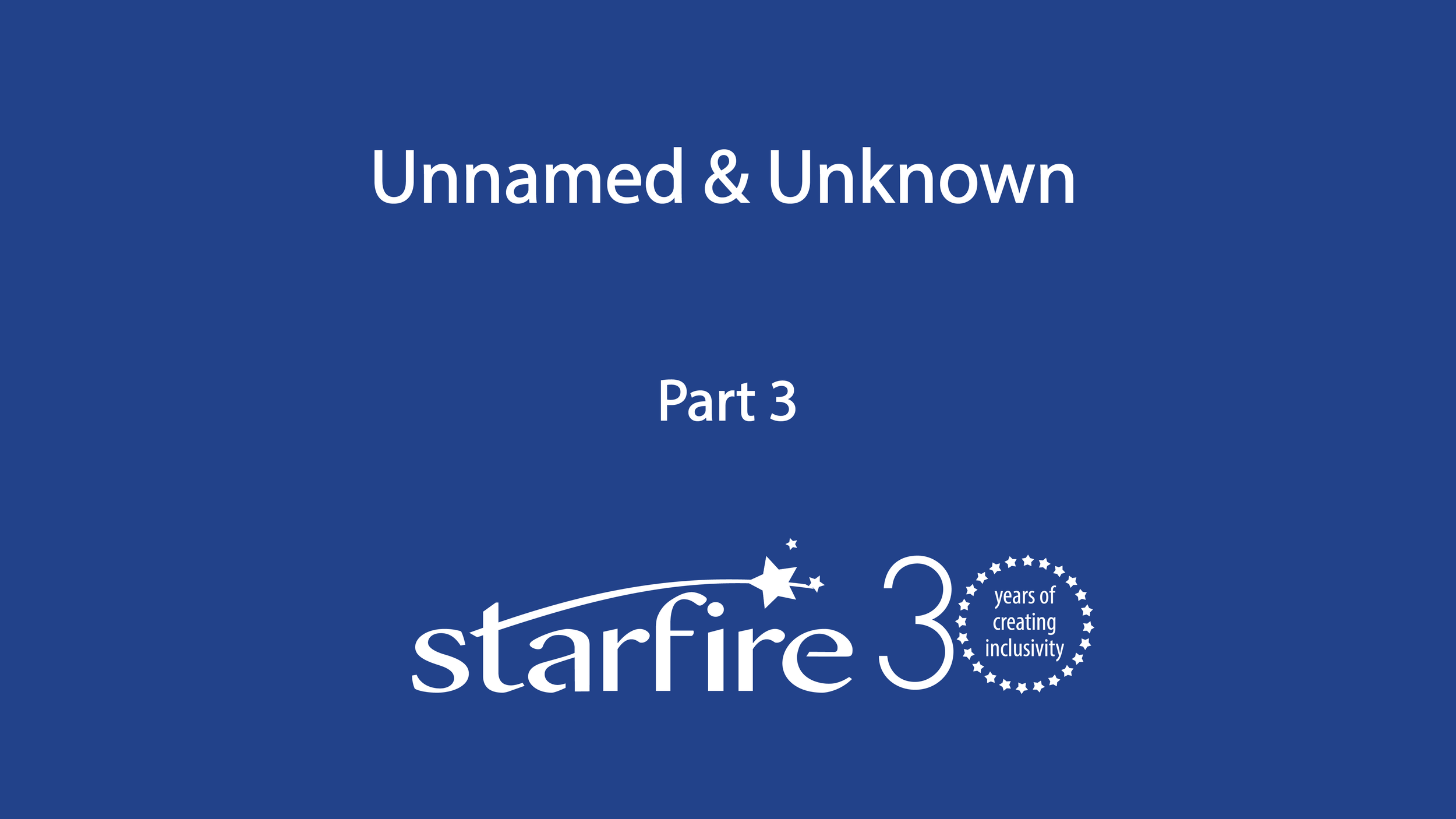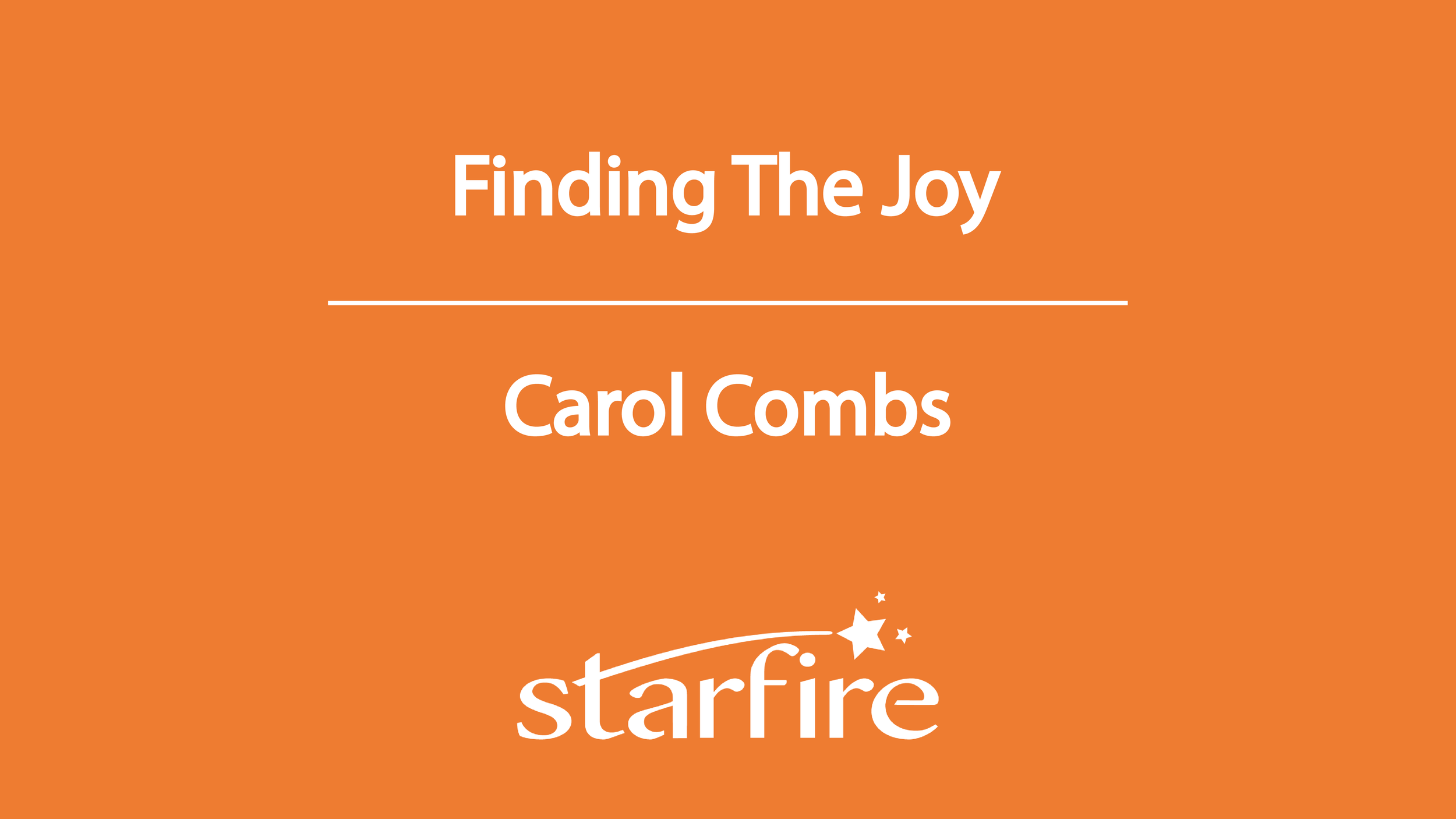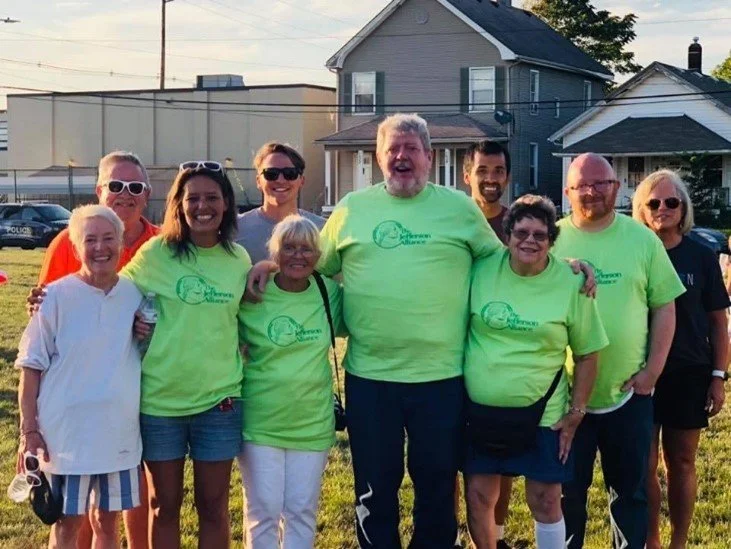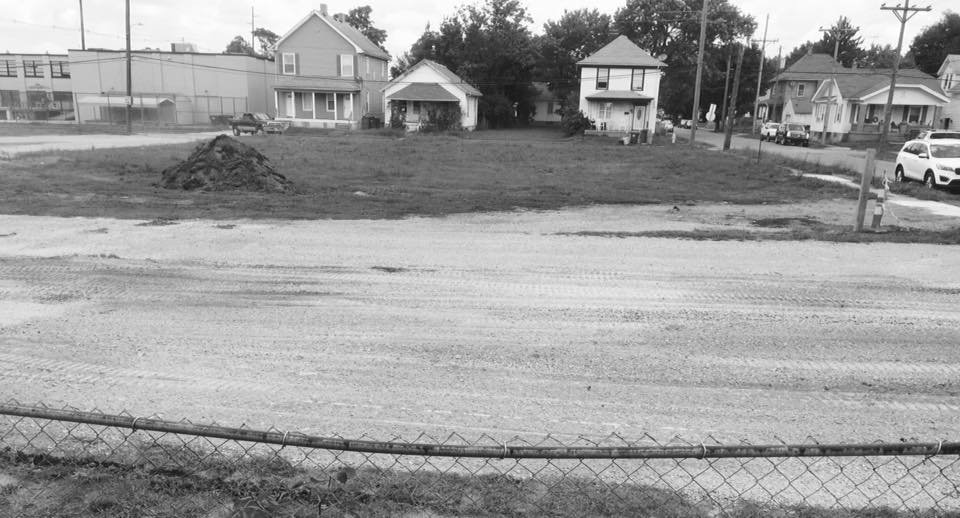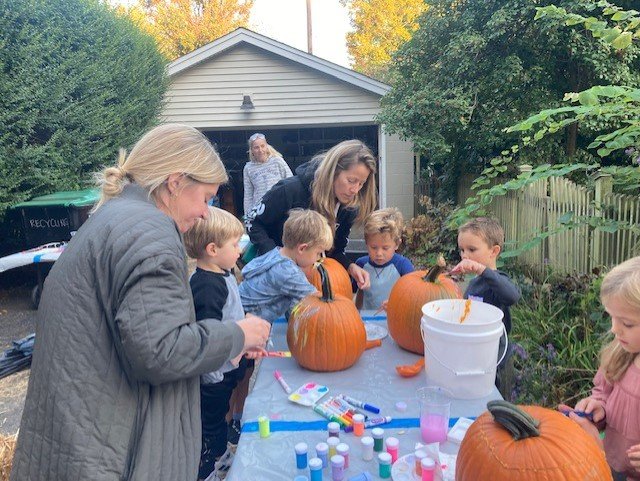Jan Goings: Hello everyone and welcome to Different With Purpose. I'm Jan Goings with Starfire in Cincinnati, and today I'm chatting with Pamela Whiteley and Kyle Miller, two awesome thinkers and practitioners in the disability field. Welcome you two. Glad you're here.
Kyle Miller, Pamela Whiteley: Hello Jan. Hey Jan. Thanks.
Jan Goings : So I want to take a minute to introduce Pam and Kyle. I met both of them this year. They’re two awesome folks, and with Starfire, we've been working with Fairfield County and doing some thinking together and so working together. And so I would love for them to talk a little bit more about that. So let me first introduce Pam. Pam is an artist and she was showing me her amazing paintings a few minutes ago. She's a graduate of Ohio University with a Bachelor of Fine Arts and a minor in theater, and she's worked inside Mansfield court system and did job training out of Columbus and then went to Blue Shoe Arts, which was an art studio for individuals with disabilities, which eventually transitioned into an inclusive studio and is now its own nonprofit that supports local artists. And Pam, just getting to know you, I think that's probably a goal of yours and a pattern, the work that you're doing to really support the inclusive opportunities for all. Currently, Pam is with Fairfield County Board of Developmental Disabilities and provides as a community builder and training specialist and is helping to develop training and supporting providers and partners in identifying those community resources that are connecting others to more inclusive communities. Pam, I'm glad you're here.
Pamela Whiteley: Thank you.
Jan Goings: And Kyle, longevity in this career, I love this, began working as a direct support professional where Kyle has provided training, coaching, and job development, began as an employment manager, followed by the director of adult services in Licking County and joined Fairfield Developmental Disabilities as the adult services director in 2015. And is just really doing some amazing work in providing that leadership and helping to transform and lead the initiatives around more inclusive work. So, I'm so glad both of you are here today.
Pam, you want to just go and jump in and add a little bit more? Tell us a little bit more about yourself. What lights you up for the day?
Pamela Whiteley: Lights me up for the day? I guess depends on the day. I don't know. I think there is, and I don't know if it's always been there, but probably this underlying drive to see people just be taken more seriously. That was pretty heavy when I worked with artists in the segregated studio. I saw them as an artist and I saw the awesomeness that they were bringing to the table, but then seeing that change and shift whenever the artwork went into the community and how it was viewed and how seriously they were taken. And I knew as long as these artists stayed under the house of the county board, they would never be taken seriously. And so that's always been the drive. And I think even now that the art has changed and now I'm just working with people of all types and providers, it's still how do we get people to be taken more seriously in their community?
Jan Goings: That's a very powerful question. Kind of a lifetime work, right?
Pamela Whiteley: Yeah, unfortunately.
Jan Goings: Kyle, what lights you up for the day? What's going on?
Kyle Miller: Well, I think the reason I've been here for so long is I really believe in the potential in people and I like to see them reach their potential, whether it's been working as a direct support staff, as you mentioned earlier, coached some sports awhile before I had children and then when they came along I kind of coached some of their sports. And I think it was all the same thing with the people that we support, whether it's athletes, whether it's people that I get to be the supervisor of and have the opportunity to work with people like Pam just to give them opportunities to grow and reach higher than maybe they ever thought they could, I think. And that's what keeps me coming here every day.
Jan Goings: That's awesome. So tell us a little bit about county systems. We might have listeners that really might not understand county boards of developmental disabilities. Who wants to try to tackle that one?
Pamela Whiteley: Okay, you want me to?
Jan Goings : Ohio is different for the way we provide services from other states.
Kyle Miller: So because of the Department of Developmental Disabilities, I think it really makes us unique even though that can be a blessing because we have a cabinet level director in the state government, it really just creates a bigger and bigger system. And so my philosophy alone, I really feel like we've got the system that was created for the people that have the highest needs, and then we try to put everybody into that system whether someone has average needs or hardly any at all, we still try to pigeonhole them and put them through the whole process of whatever our system is. And it's a very lengthy and intrusive system that I think more often than not sends the message to the rest of the world that the people that we support need the system and keep them away. And so that really is frustrating. I think Pam and I would share that frustration and I think we often, I don't know how many times a day, but a lot are talking to people about let's try to figure out ways to help people survive outside of the system. Pam, I'm sure you've got more information on better words than I've got.
Pamela Whiteley: The only thing that I see happening is that, and maybe this is more of an empathetic view towards the system, but I think what county boards were created in 1967, is that right, Kyle? And so, I think when the county boards were created, it was an attempt to create a better system because of all the damage and hurt that the system had already done. And so I think that it was like how we can do better and we can be better, but what they did was create this really big monster that I think has evolved and it's changed because the mindset that's underlying it all has not changed. So even though it was an attempt to make amends and make lives better of people, it also is the assumption that a life can't be great without the system. I think that's the double edge to that sword.
Jan Goings: Would you agree that our community sees systems, boards of developmental disabilities or unique organizations that are specific for people with disabilities and say, you got them, this is your responsibility, you're the experts? And then our communities step away maybe feeling inept, maybe not knowing how to contribute because they might not feel like they have the expertise and that is that double-edged sword, right? Some people do need supports not always as deeply as some with higher needs, and yet everyone is kind of in that same identity as disability and creates that limitation.
Kyle Miller: I agree, Jan, I think what I like the way Pam talked about empathy sometimes I'm not nearly as empathetic as I should be and I haven't been here since 69 or 67, so let's just…,
Jan Goings :Yeah, let's get it, that's on the record.
Pamela Whiteley: I didn't mean to assume you were, I'm sorry.
Kyle Miller: But there's so many things that I look back over the many, many years that I have done this and I've done a lot of things that today I'm saying, why would I do that? And I scratch my head. And I think that's a piece that we have to remember. Like Pam said, the system was put together, parents went out and solicited support for people their family members, we got to do better, we got to do better. And then what we've done is we think that we're doing these great things and we go out and do so many things for the people that we support. My biggest part of my experiences is from the employment piece, and so many times we would go out to the business communities and basically it would be our reputation on the line about, “hey, let us do this for you”. But we were really asking them to do things more of a charity perspective than here's what's good for your bottom line.
So the message that we sent, and I think we're still sending as a system in the DD world, is this is the right thing to do, which in essence, the people that we support have this, like I've said before, the potential. And one of the things that's just glaring to me is the unemployment and at least in the state in Ohio, and I think it's nationwide, but we've got all these people with disabilities that are unemployed and have never had the opportunity to discover what that even means and that opportunity for them. And so again, the message that we send as a system is, like you said, Jan, depend on us. We'll take care of it. We got this. We all know that anything in isolation is not really successful.
Jan Goings: Can you share some of the work or some direction that you're doing around that employment area for people with disabilities?
Kyle Miller: So because here in Ohio we basically, the county boards are not doing much direct care or any of the direct care stuff. So we're really completely removed from doing this stuff. So what we're trying to do internally is get the rest of the county board to recognize how those other, there's so many other naturally existing resources for people with disabilities. For instance, when we go out and we have a job developer knocking on the doors of employers or have to sit down with somebody and because they're getting revenue to spend time with a person to complete their resume, again, we're providing people all the services that the most significantly the people with most significant needs have and putting everybody in that block. And so our vision here in Fairfield County is how do we communicate to the rest of our staff and our coworkers that people can support themselves or they can have a lot more success with less intrusive support. So how can we help them connect with the naturally existing resources for everybody? So that's kind of our focus right now from an employment perspective.
Pamela Whiteley: And I think just one more thing that is not news to anybody really, but I think unless you really see the inorganic way that we support people with disabilities to do things that nobody else would do in a way when it comes to employment. So we talk about how powerful relationships are for instance. There's so many people that we know that are working in the system, and if you ask them how did they get involved and how did they get this job, it's probably going to be a high percentage of people that knew somebody or that it was through a relationship. But yet we don't have that same thought process when it comes to a person with a disability that they could possibly have a relationship that would lead to employment. So then we say, we have to fix you first because you can't just go out the way you are. So sign these papers, come to us and we'll fix you for however many years till we decide that you're ready then to go start looking for a job. And we're the ones that are the experts that know best. None of us would do that. We would've jumped ship a long time ago and said, I think I'll take this and handle it on my own because you don't appear to be doing me any favors.
Jan Goings: I think about, as you said, when people are looking for jobs and employment, it's about connections and who do you know and going out and having coffee with someone and kind of reaching out and it might take some time and it's establishing those relationships and connections. And I know you all are doing some of this work, helping people identify their interests and passions. It's not just a job, but something that really brings out the joy and the gifts that I have. Can you guys talk a little bit about some of the work that you're doing maybe with helping people understand the importance of community and connections and relationships?
Kyle Miller: Before I am going to let Pam talk about that because she's great at it, but you talk about it with regards to employment and I think one of the most biggest points that we should emphasize, so many providers of employment have a connection with a business. And so it doesn't matter what the person's looking for, this is their connection and that's where they're going to find them a job and attach them. What kind of a message do we send when we're bringing someone that's really not motivated to be there? I like to look at employment the same way as we do everything else. Let's dig in and find out what someone's passion and their interest is. I just watched a video this morning. Basically, you should do what you love because then you'll love what you do. There's so many times I've seen people with and without disabilities have barriers to success, but if they're doing something that they're passionate about, they'll figure out how to get over those barriers on their own. They don't need us to do that.
Jan Goings: Well said! Well said. Pam, you were going to say something about making community connections, community building?
Pamela Whiteley: I think he should drop the mic on that.
Jan Goings: I know. I love the mic moment. Thank you, Kyle.
Pamela Whiteley: That's been his thing. I think Kyle has always had, since I've known him a very, I don't know, I would say against the grain view towards employment because it is a bit more natural. It's the way things should be, but it's so different than the way the system has approached it. And so I think he's gotten a lot of pushback from the system because they have to take an honest look at how they're doing it. Is it the amount of time, human resource and money really doing us the thing that we think it's doing? And I think that's a hard look in the mirror. And I don't think there's a lot of people who can do that where I know that's something that Kyle has no qualms about making adjustment. If it's not the right thing, it's not the right thing and he's going to do the right thing and make sure that he's changing it. And it's always been in the best interest of the person who's utilizing our services. It's never been at the benefit of the system.
Jan Goings: Well, that's leadership. That is truly leadership. I often think about leaders who are really disruptors or really about the mission and the work. It takes a lot of energy to do good work like that. And I think about how do you refuel yourself to really make that happen? And I know Pam, we were chatting earlier about just being curious and asking questions and finding folks who are willing to engage in learning and thinking a little bit differently. Sometimes that will help refuel not the passion because the passion is there, but just the energy to keep moving forward. Can you talk a little bit about some of the experiences you might've had around exploring your curiosities and things like that?
Pamela Whiteley: Yeah, I would say probably, I don't know. It was the first meeting that Kyle, when he started working here and we had a meeting and he was really just trying to figure out what I was doing and what it was all about and how an art studio should be within the county board. And he had a lot of curiosity, but one of the things that I think he's allowed for me to have, which falls into my passion, is a drive to learn more. I've always asked questions and wanted to know, but why we're doing what we're doing? And so I've done a lot of deep dives, a lot of reading and research, but I'm also passionate about that because I don't want to keep doing something and then not for why. I'm always asking why are we doing this, which always leads me to another and another. And so I think that ability to continue to learn why we're doing what we're doing and how we can do it better, and then also finding people who are doing things differently and doing things better. There's just been, I think it's that freedom that I've been able to have within my job and within my realm that if I was told to just not ask questions and keep doing it, then I wouldn't be here.
Jan Goings: That's awesome. So I'd love to know a little bit more about what's happening in Fairfield. What are some of the transformation work that you're all doing and some new initiatives that are happening? And we know it's day by day and incremental.
Kyle Miller: So I'm going to talk about the 30,000 foot level and I'm going to pass the ball off. One of the things that our former superintendent, I think he brought me in because I'm a disruptor. I mean, that's kind of what he wanted to be and how do we do things better. And again, I think Pam mentioned it earlier, John's vision and mine are how do we help people with disabilities live better lives? And after he left and our new superintendent came in who had worked with us before, believes, don't try to restrain what we're trying to do, but let's make it grow. And so I think as a leadership team, we spent the whole first part of this year digging deep about our mission and our vision of our organization. How do we get everybody in this agency on the same page using the same language, using the same words?
And it's been a challenge, like I said, John and I, but were doing it for years and we just never really found the right way to do it. I think David's his new vision for that's how we're going to do it as an executive leadership team and rolling it out and the expectation, I think the expectation is so important. I believe that expectations has such a powerful impact on everyone, but if our agency, if one out of the 150 people from this agency is talking something that counters what we're really trying to do, I don't know if we're going to make any movement at all. I think we all have to be saying the same thing. And I think that's where we got started this year alone.
One of the biggest things that I could even say is we brought Starfire in to work with our staff, our department alone, and then some of the providers and other staff in our agency, and then for the whole agency the past month. So helping everyone recognize where we're going, understanding the words we're saying and the philosophy. And the fact is it's all based on people that we support living better lives.
Jan Goings: Thanks for the shout out to Starfire. We've enjoyed that relationship and working with providers and really helping to think through the experiences people have with disabilities and as you said, coming up with a common language or a framework to really understand what's happening and to be able to make change. So thank you, Pam. Is there anything in addition?
Pamela Whiteley: Yeah, some of our early conversations, we found that there was a lot of commonality into the barriers as to why things weren't a different way. That was easy to do. Now the hardest part has been agreeing or getting a common, like he was saying, a common vision and voice to a way forward. And so that's been really tricky. And again, I can't stress it enough that I think it's our mindset. It's that base, that underlying drive as to why we're doing what we're doing is different for different people. And that's where we're, I think, torn in some ways because me helping somebody might look different. My help might look different than your help. And so that's been tricky.
I would say some of the things that we've talked about, which is not going to be, it's not rocket science, but obviously how can we do things earlier? How can we change some of this messaging and mindset earlier in life?
Jan Goings: Talk a little bit more about that. Are you meeting with individuals with family members? All of the above?
Pamela Whiteley: Yes. All of the above, education system, the families too, obviously. I think the more we can equip people who are utilizing the system and their families the most, I think they're going to be the game changers. And so I think if we can get that going more, I think they're going to put the pressure on the system to do better and do differently.
Jan Goings : Yeah, I was going to say we have evidence of that families really creating inclusive schools and legislation and all of the things that family voice has really been powerful. Absolutely.
Pamela Whiteley: Yeah. I think that's the bigger, it's kind of frontloading our efforts and kind of shifting some of those resources to be working with younger families and seeing the capacity of their community. I mean, I think that's what we've learned a lot from Starfire and the work they've done, but not just that, but the asset-based community development that's happened anywhere and some of the other practices that I think Starfire has learned about and started implementing, seeing those positive changes. People come to us looking for the answers and I think us maybe empowering them and changing that momentum from us being the fixers and the ones that are coming to the rescue, to them recognizing their own capacities and where their power lies, I think is another thing that as an organization, we're really trying to, I would say within the next couple of years, there should be a big shift in that as far as our messaging goes.
Jan Goings: And to see some of those answers and support within the community, within the neighborhoods. Yeah.
Pamela Whiteley: Yeah, I think early you had asked a question and one of the things that I think I recognize is that there's just a lot of things that our system is doing that they don't have business doing and they've always done it. So I think we have to change some of that. And the art studio was one of those, and there should be no art studios within the DD system. It should be a community.
Jan Goings: So we're going to wrap up in a little bit. I am curious though, if you could change one thing, what would it be?
Pamela Whiteley: Like ever, anywhere?
Jan Goings: Go big! I don't know what my change would be, but I think we have changed language so much that I think it confuses people, whether it's “inclusion” or “diversity” or all of that. And ultimately, I think Kyle, it's back to what you said to me, better lives for everyone. And I think of “belonging”, we have all this language that I think makes it sound like we're creating change. And maybe there is some, but I think it gets lost into, I think the day-to-day reality. So I don't know what my change would be, but somehow figure out, as you say, everyone getting on the same page with that language, that really does drive some of our work.
Kyle Miller: One of the things that, and I go back way back, as we all know, when I got started in Licking County, we had a focus on training and learning and transferring power. If you're in the system in the seventies, which I wasn't, but in the seventies, Mark Gold was trying to do some revolutionary things and he talked about this transfer of power. He used the word power, which I think is a fantastic way to look at it. Transferring the power from the trainer to the learner. Early in my career, whether it was a DSP or when I was in the employment area, it's like, how do we help people to have that power? Now we're talking about independence, whatever we want to call it, where they're doing things on their own. If we could really focus on transferring the power, I think of our system and trying to be empathetic, you just think about if you're in our field, it feels so good to do things for other people. Look what I've done, it makes me feel really, really good. And I think that we've gotten to the point where that's what our systems become.
I'm telling you, it feels so good whether you're a parent, a coach, a supervisor, or working with people with disabilities, when you've transferred the power and they've not needed you anymore, that's the coolest thing ever. And I think if we could get back to that piece where we would all recognize our small piece of someone else being successful, if we can just transfer more of that power where they can do things on their own, man, I think the whole system would take off.
Jan Goings: Love that. Pam, did you come up with one?
Pamela Whiteley: This is going to be muddy. Alright, so of course I keep going back to history and saying, could we change one thing from history, but I’ll relate it. I think back to the early education system, like the one room schoolhouse of somebody having a class of anywhere from a kindergartner to a high schooler all in the same room. I would change the fact that if somebody couldn't learn, they took them out of that schoolhouse to go somewhere else. I would change that, they would've brought another teacher. So relating that to today, I would change the fact that we keep removing people from the place that they need to learn and the people that they need to learn from. And that's in school, that's in the community, that's within our system, that's in my house. Let people learn where they're supposed to learn and stop removing them from those places.
Jan Goings: Provide what they need in those settings, right? Yeah, I love that. Those are really two amazing points of wisdom.
Kyle Miller: So one of the things that we talked about a lot is our SSAs have to feel, they've got to feel like they're drinking from a fire hose because it's just constant stuff that they have to do. And I'm reminded, and young people aren't going to remember this, but I'm reminded of the Lucille Ball when she was at the chocolate factory trying to keep up with conveyor belt and she couldn't. So she was putting the chocolate everywhere. And it's like if you had to do that every single day for seven and a half or eight hours a day, why would you stay? And I think if we flip it to where we are, and again, I think we're working really hard to figure out how we can take the focus and the spotlight back on the people where it belongs, where we can support them and still meet those minimum compliances, those things that have to do with regard to the system, but really, really put the priority and understand that everybody here believes the priority is the people that we support.
So you can drink from a fire hydrant if you're, every once in a while you get a little gasp. It's like, having a great success because somebody would come in and brought the hose for you, and you get away. That's when we have those victories, and we see those successes of people not need us as good because the reality is you're going to have a caseload of this many people and it's never going to change. You may have 20 people leave your caseload, but there's 20 more waiting in line. That's never going to change. So we have to help them realize, give them some hope, and everybody in the system, some hope, just like the people that we support. And I think it makes it better for everyone.
Jan Goings: I love that, we have to give people hope that this work is doable, that they have the tools and resources and the support to be able to help and to be successful at their job. Everyone wants to have that. If not, we're turning people away or they're leaving our field, and we know we don't want that to happen. So I love that example of Lucille Ball and the conveyor. I do know what that is.
Pamela Whiteley: I was thinking as you were talking, one of the things that was hard for me, and it's not that I didn't know, but I was at that ABCD conference and it lays out really how institutions fit into community building. And we as an institution have this belief that we are much more important in that process than we are. And I think that was a hard thing to see, oh man, I had to question that, of the community building, of doing great stuff, am I in the right part? Is being in the institution the right part of that piece? Because it's really a smaller piece than we think. What are our assets? What are we really powerful with, and what are we rich in and how do we stick to those things and not overstep into these other realms of pretending that we are the community? And that's what I think we've done, and people still believe that. So that's what they've expected from us.
When you think about that, then that does create a fire hose effect, right? Then you have to be all things for a person and it becomes weird and too much and puts a lot of pressure on people. So the best way to drink from a fire hose is to turn your back and let it just sprinkle. Just get the drops.
Jan Goings: Oh, there you go, great image!
Pamela Whiteley: Or the puddle after it turns off. Yes, or not stand in the fire hose.
Jan Goings: Just find another place to drink from right? We can take that metaphor all the way out. I want to say thank you to both of you. You are truly dedicated folks out there doing the hard but good work and thanks for sharing your insight with me and our listeners. This has been really powerful to hear your stories. So, thank you both.
Kyle Miller: Thanks for the invitation, Jan.
Pamela Whiteley: Yeah, thanks for having us.

